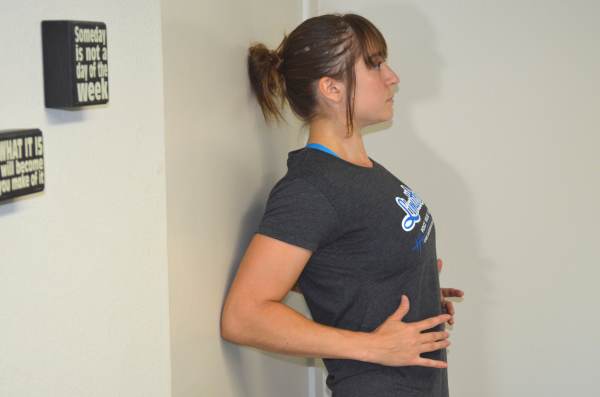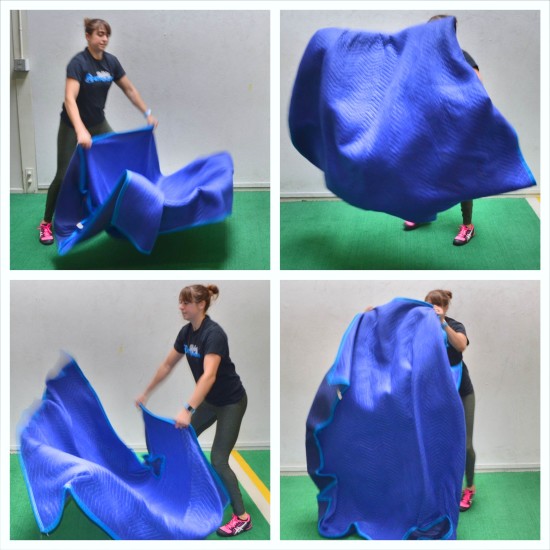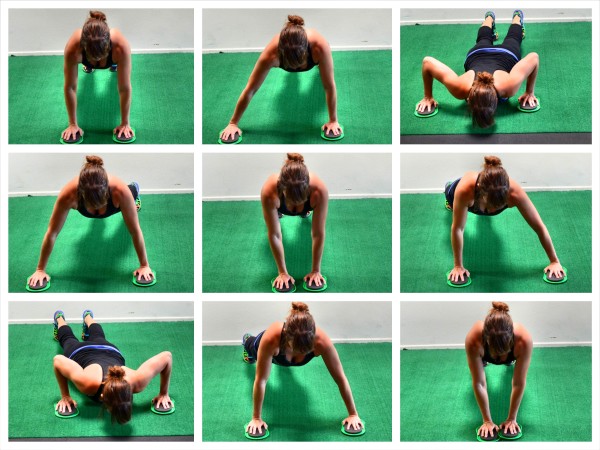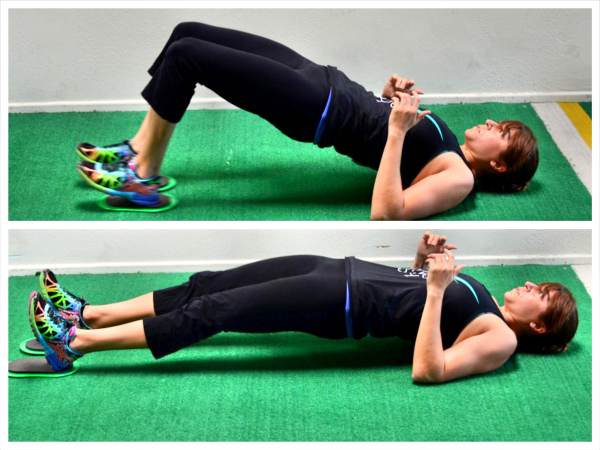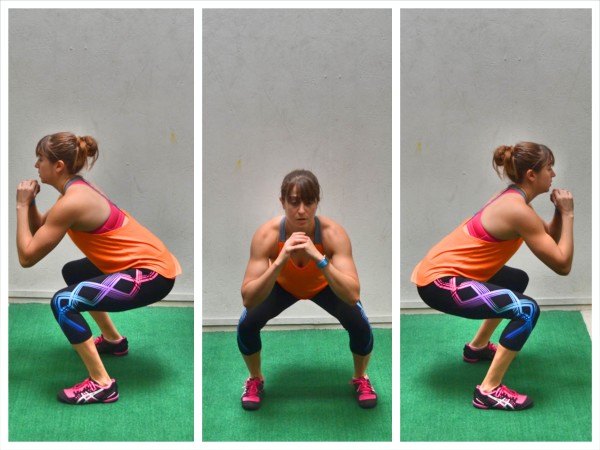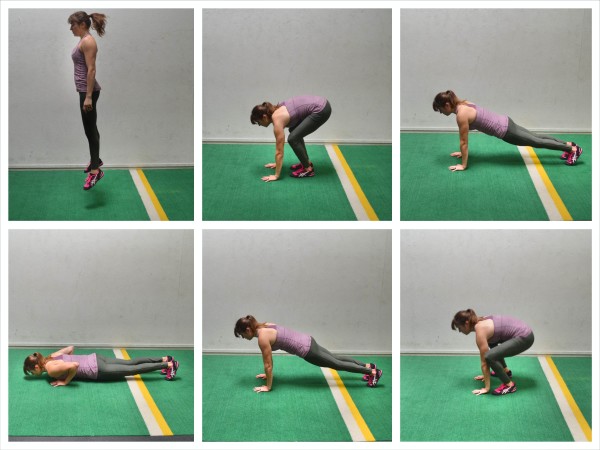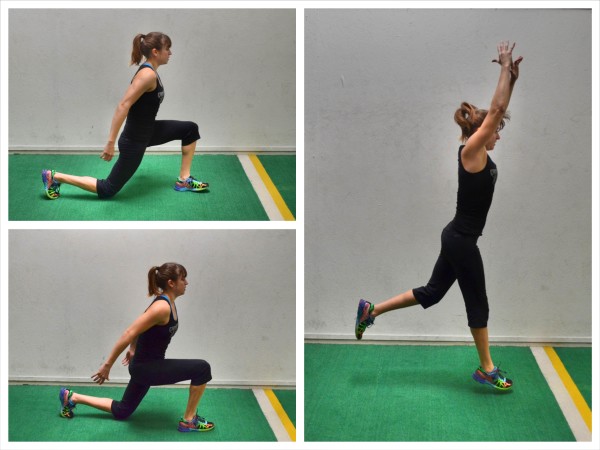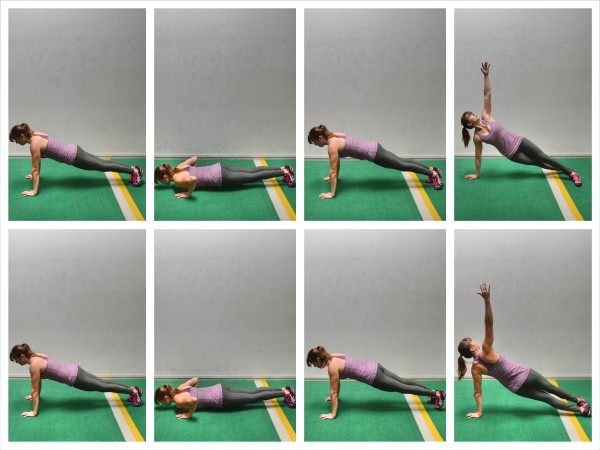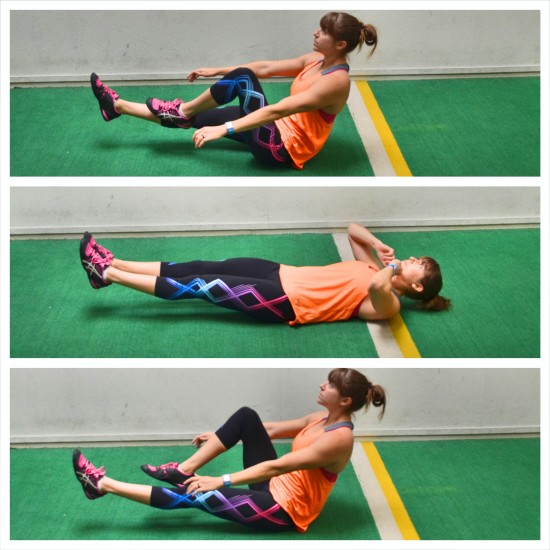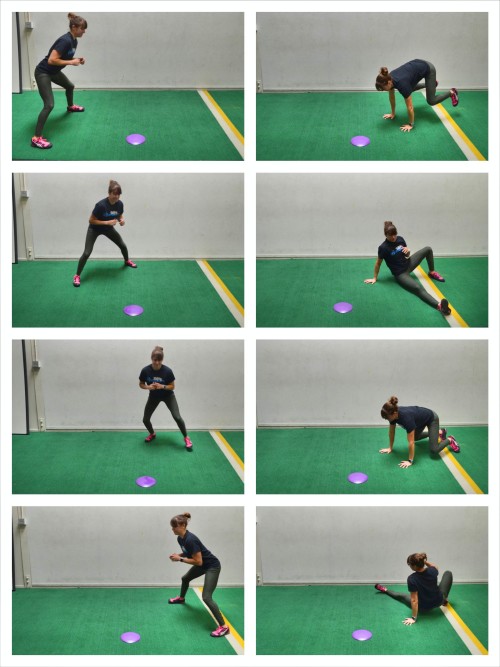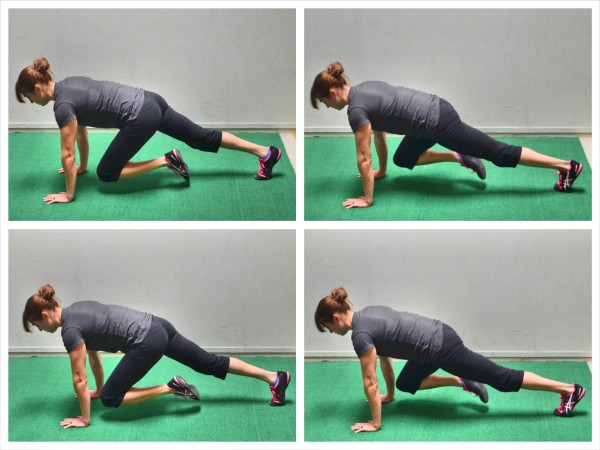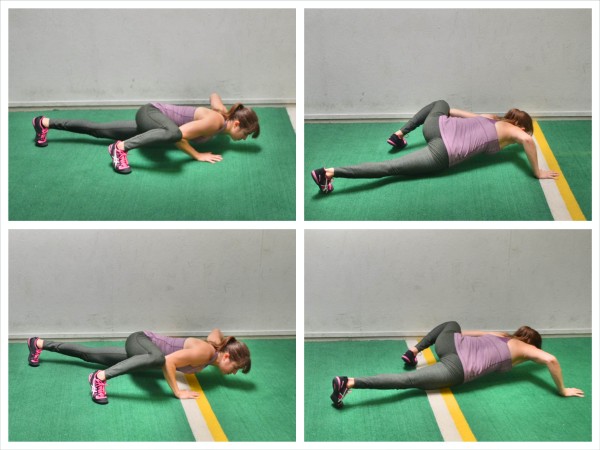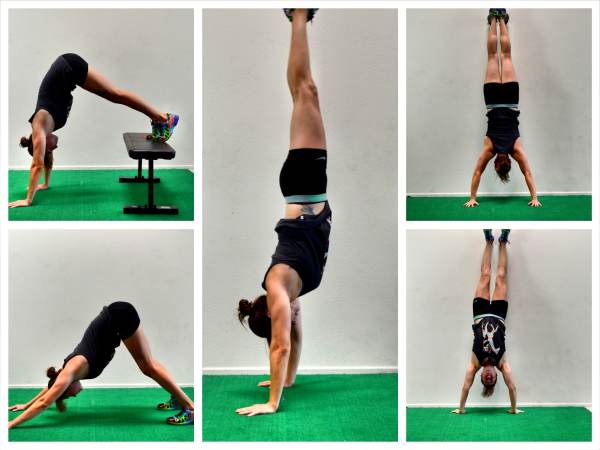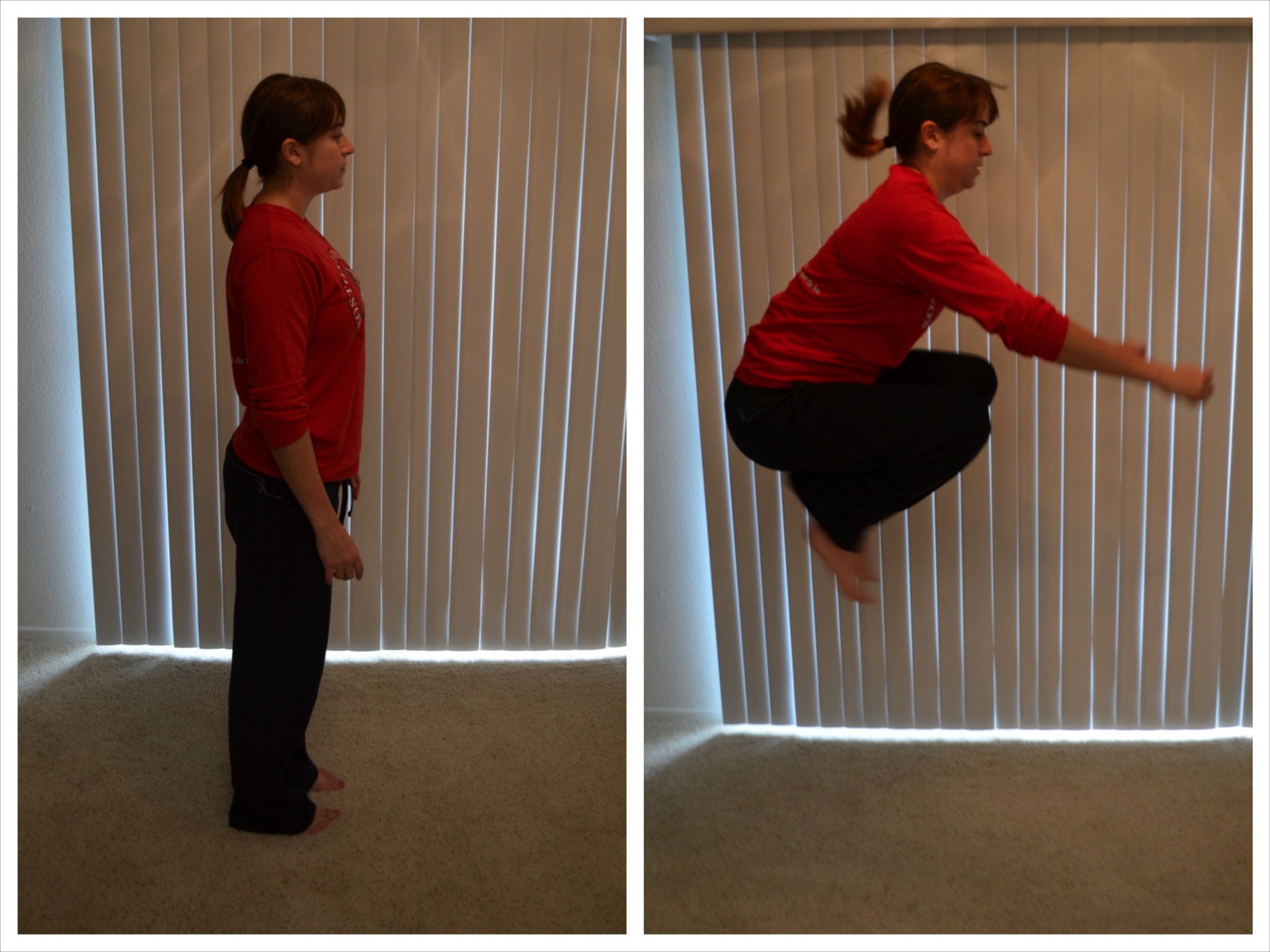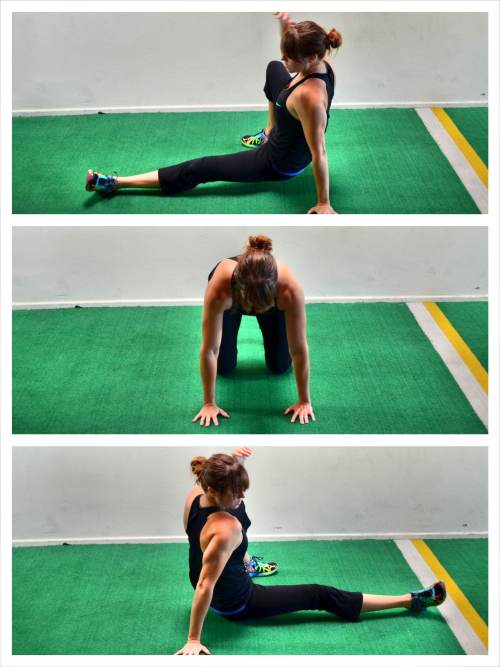
The Push Up Challenge Workout
WARM UP
Stretch and Roll Out:
Wrists/Forearms
Chest
Shoulders
Traps
Upper Back
ACTIVATION
Complete 1 round of the circuit below to get your body read to do push ups.
CIRCUIT:
30 seconds Dead Hang
30 seconds High Plank Hold
30 seconds Posterior Plank
30 seconds Pelvic Tilt
WORKOUT
Complete the 3 minute push up test then rest 1-2 minutes before moving on to the second circuit. Complete 6-8 rounds of the second circuit. Focus on the push up variations that target your weak points. Rest 15-30 seconds between rounds.
CIRCUIT #1:
3 minute Push Up Test
CIRCUIT #2:
15 seconds Push Ups (Pike press, staggered, close grip, wide grip, eccentric only, incline, push up with release at bottom)
15 seconds Scapular Wall Holds or Lying Bat Wing (or Inverted Row Hold)
15-30 seconds Rest
NOTES:
Don’t do this workout more than every other week unless you cut out the 3 minute push up test. Once a month is actually best to test and see your progress. Any more than that and you will just keep burning yourself out. The second circuit though is perfect to improve your push up work capacity.
Also, make sure to pick a push up variation that you can do the entire 15 seconds. If you can’t keep moving, regress to an incline push up instead of letting your form break down or resting. The point is to keep moving while working on your weak points.
Feel free to post your 3 minute push up test score in the comments!
EXERCISE DESCRIPTIONS:
Dead Hang – Hold on to a pull up bar or suspension trainer and hang from the bar. Your hands can be facing toward you or away from you. As you hang, do not let your shoulders shrug up. Keep your chest pressed out and your core tight. Your legs should hang down toward the ground. Do not tuck your knees up toward your chest.

High Plank Hold – Set up on your hands and toes (advanced) or hands and knees (beginner). Feet are together and hands are underneath your shoulders. Draw your belly button into your spine and squeeze your quads, glutes and adductors. Your shoulder blades should be down and back and your shoulders shouldn’t be up by your ears. Do not let your upper back round. Keep your head in line with your spine. If you really draw your belly button in and tilt your pelvic forward, your abs should almost instantly start shaking.
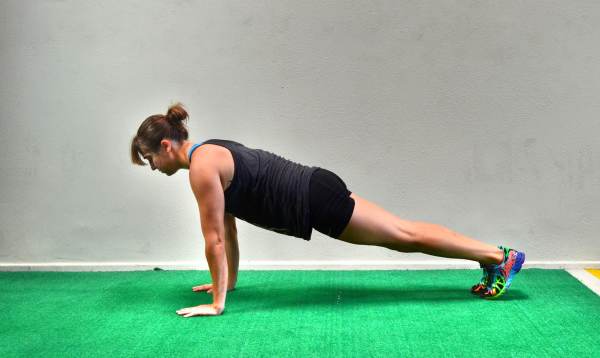
Posterior Plank – Start seated on the ground with your legs out straight and your hands on the ground behind your butt. Your finger tips should be pointing toward your butt. Drive through your hands and heels and raise your hips up off the ground toward the ceiling. Press your chest up and out as you raise your hips. Keep your legs straight as you bridge up and relax your head back. Your body should be in a nice straight line at the top. Beginners may need to bend their legs a bit to hold the bridge at the top.
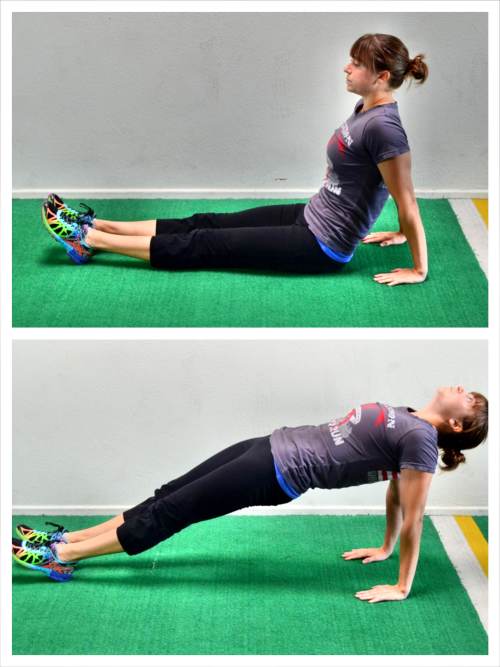
Pelvic Tilt – Lie on your back with your knees bent and your feet flat on the ground. You should almost be able to reach your hands down by your sides and touch your heels with your finger tips. Feel the space between your low back and the ground as you lie there. Then draw your belly button in toward your spine and press that space away. You should feel your low back against the ground. Beginners may need to hold there. More advanced exercisers will add in a march or even draw both knees in. To do the march, they will bring one knee at a time in toward their chest and then return their foot right back down to the ground. Their low back will never leave the ground as they march. If they can keep their core engaged while marching for 10-15 reps per side, they may then pull both knees in at one time and then lower their feet back down. Their knees will stay bent the entire time and their back will stay pressed against the ground. Complete 10-15 reps then move to the next exercise. Make sure you really focus on keeping your core tight and your back against the ground no matter which variation you do.
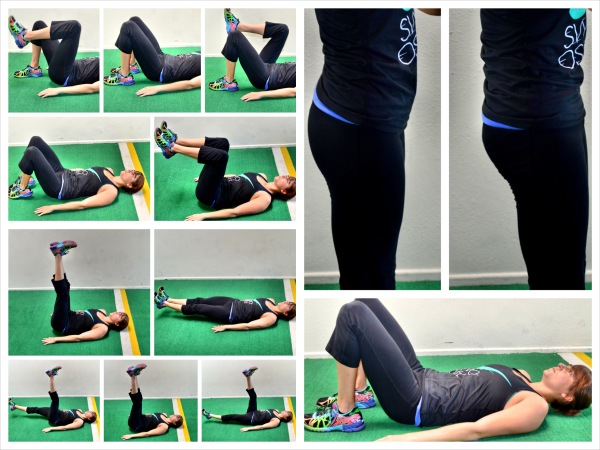
3 minute Push Up Test – For this test, you have three minutes to do as many push ups as possible. You may sit back on your heels and rest whenever you need. For the push ups to count, you must drop your chest to the ground and lock your arms out at the top. Your body must move in a nice straight line. If your form breaks down, the push up doesn’t count. It is best to have someone to count for you.
Push Ups (Pike press, staggered, close grip, wide grip, eccentric only, incline, push up with release at bottom) – Mix up the type of push ups you do for the 15 seconds and really target your weak points or challenge yourself to do new and difficult variations to become stronger. If your shoulders are weak, the pike press or staggered push up could be a great option. If your triceps are weak, try the close grip or even push up to dip. If you want to work your chest, try a wide grip push up. If your core fails and your range of motion isn’t great, try an eccentric only or push up with release. Here are some other great and fun push up variations.
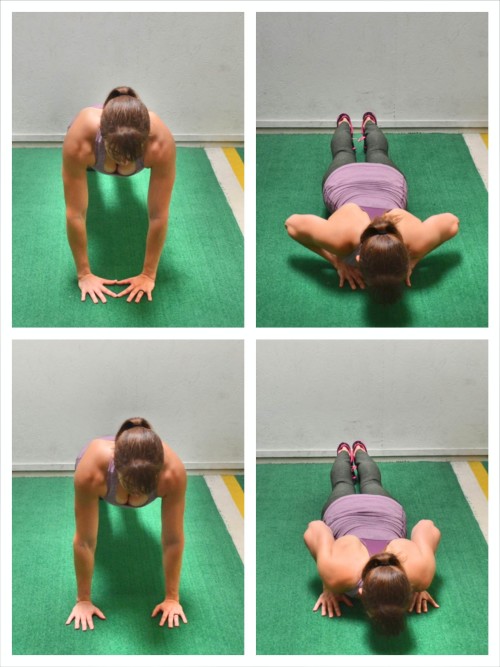
Scapular Wall Holds or Lying Bat Wing (or Inverted Row Hold) – For descriptions of all Bat Wing Variations, click here. To do the Scapular Wall Hold, stand with your back to the wall. Step a couple of inches away and bend your arms to 90 degrees. Keep your elbows in by your sides and drive them back toward the wall. Lean onto your elbows on the wall. Do not let your upper arms or back touch the wall. Relax your head back. Pinch your shoulder blades down and back while keeping your core tight as you lean into the wall. You should feel this move low between your shoulder blades. To advance the move, move your feet a bit further from the wall.

